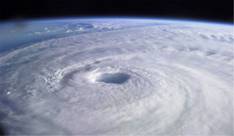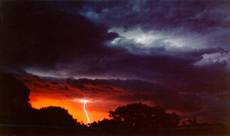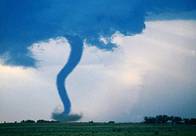|
Severe Weather Alerts
By Hanna Nilson
  
When severe weather is on its way, will
you be ready for it?
Severe weather
alerts are meant to be a warning for people located in an area which could
soon be hit by major storms. Yet, in the
National Weather Service’s Guide to Weather Preparedness, it
reports that Tornadoes cause an average of 70 fatalities and 1,500
injuries each year! Some other shocking statistics include:
 Lightning
– Annual average of 80 fatalities and 300 injuries.
Lightning
– Annual average of 80 fatalities and 300 injuries.
 Strong Winds
– Extremely dangerous for aviation and can be as damaging as a tornado!
Strong Winds
– Extremely dangerous for aviation and can be as damaging as a tornado!
 Flash Floods
– Is the #1 cause of deaths associated with thunderstorms…more than 140
fatalities each year!
Flash Floods
– Is the #1 cause of deaths associated with thunderstorms…more than 140
fatalities each year!
 Hail
– Causes more than $1billion in crop and
property damages each year.
Hail
– Causes more than $1billion in crop and
property damages each year.
The National Weather
Service (NWA) also suggests that one of the most important things you can
do to prevent being injured by severe weather, is to pay close attention
to sever weather alerts and warnings. “Once you receive a warning or
observe threatening skies, YOU must make the decision to seek shelter
before the storm arrives…It could be the most important decision you will
ever make.” Here are some useful tips and tricks which will help you to
respond to your local severe weather alerts:
-
Plan Ahead: Have a plan to
handle severe weather in advance. Find out more about your community
shelters and weather precautionary measurements. Also, visit the
Red Cross online for more information about handling severe weather
disasters.
-
Know How Weather Alerts Work:
For example, there are 7 different levels in the tornado rating system;
from F0 to F6 – the
Fujita Scale (as seen below).
|
F-Scale Number |
Intensity Phrase |
Wind Speed |
Type of Damage
Done |
|
F0 |
Gale tornado |
40-72 mph |
Some damage to
chimneys; breaks branches off trees; pushes over shallow-rooted
trees; damages sign boards. |
|
F1 |
Moderate tornado |
73-112 mph |
The lower limit
is the beginning of hurricane wind speed; peels surface off roofs;
mobile homes pushed off foundations or overturned; moving autos
pushed off the roads; attached garages may be destroyed. |
|
F2 |
Significant
tornado |
113-157 mph |
Considerable
damage. Roofs torn off frame houses; mobile homes demolished;
boxcars pushed over; large trees snapped or uprooted; light object
missiles generated. |
|
F3 |
Severe tornado |
158-206 mph |
Roof and some
walls torn off well constructed houses; trains overturned and
uprooted trees. |
|
F4 |
Devastating
tornado |
207-260 mph |
Well-constructed
houses leveled; structures with weak foundations blown off some
distance; cars thrown and large missiles generated. |
|
F5 |
Incredible
tornado |
261-318 mph |
Strong frame
houses lifted off foundations and carried considerable distances to
disintegrate; automobile sized missiles fly through the air in
excess of 100 meters; trees debarked; steel re-enforced concrete
structures badly damaged. |
|
F6 |
Inconceivable
tornado |
319-379 mph |
These winds are
very unlikely. The small area of damage they might produce would
probably not be recognizable along with the mess produced by F4 and
F5 wind that would surround the F6 winds. |
-
Be Alert: If there is a Tornado
Warning or Tornado Emergency in your area, that means seek refuge! This
sever weather alert is only used when there is an indication of very
strong storm systems in the local area. Such severe weather alerts have
been issued in cases such as the 1999 F5 Moore tornado in Oklahoma and
the 2007 EF5 Kansas Tornado.
There are many other
types of
Severe Weather Alerts and Terminology
such as the Flash Flood Warning, Winter
Storm or Blizzard Warning or Hurricane Warning. You should also know that
there is a significant difference between a severe weather Outlook,
Advisory, Watch and Warning. These four types of weather alerts reflect
the different levels of hazardous weather.
By knowing and
understanding the significance of your local weather reports and
severe weather advisories; fatality,
injury and property damage rates can be drastically reduced. Being
prepared to handle Mother Nature at her worst can be one of the smartest
things you can do, especially if you live in an area where severe weather
is more likely.
Severe Weather
Weather Instruments
Local Weather Forecasts via Cloud Reading
A Modern Look at the Weather Almanac
|





